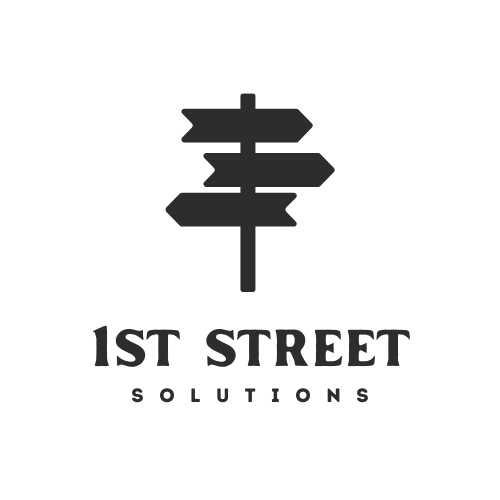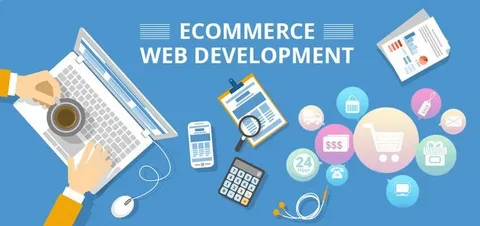In the world of digital commerce, user experience (UX) can make or break a business. As online competition increases, brands must prioritize seamless browsing, easy navigation, fast performance, and trustworthy website design to convert visitors into paying customers. A positive user experience not only boosts sales but also strengthens customer loyalty and brand reputation. Understanding how UX influences buying behavior is crucial for any business looking to grow in today’s online landscape.
User experience shapes the entire customer journey from the moment shoppers land on your homepage to the second they complete a purchase. This is why businesses investing in design enhancements and ecommerce web development often see measurable improvements in engagement, retention, and conversions. When customers feel comfortable and confident navigating an online store, they are far more likely to take action. Let’s explore the key elements that influence UX and how you can optimize them to drive higher online sales.
Understanding User Experience in Online Shopping
User experience refers to how customers feel as they interact with your online store. It encompasses everything from layout and design to product visibility, mobile responsiveness, and ease of checkout. A smooth shopping journey encourages trust and keeps customers engaged. On the other hand, confusing layouts, slow loading times, and poor navigation increase bounce rates and cart abandonment.
Every element of your website communicates either convenience or frustration. Colors, fonts, spacing, menu structure, and product presentation all contribute to how users perceive your brand. More importantly, UX is directly tied to conversions. Studies show that customers often abandon purchases due to poor usability not because of product dissatisfaction. By building your website with users in mind, you create an online environment that promotes satisfaction and encourages sales.
Simplifying Website Navigation
Navigation is one of the most important components of user experience. When visitors land on your website, they should immediately know where to go next. Simple and intuitive navigation improves engagement by allowing customers to find what they need without confusion.
Clear menu categories, logical subcategories, and a well-placed search bar help users browse with ease. Navigation should feel instinctive no one wants to click through endless pages just to find a product. Breadcrumb navigation is another helpful feature, allowing customers to track their path through the site and return to previous pages effortlessly.
Predictable navigation reduces frustration and boosts conversions. When customers can easily find products, information, and support, they are much more likely to progress through the buying journey.
Enhancing Website Loading Speed
Website speed has a significant impact on user experience and conversions. Slow-loading pages can cost businesses valuable customers. Even a one-second delay can drastically reduce user satisfaction and lead to higher abandonment rates.
Common causes of slow speed include oversized images, excessive plugins, heavy scripts, and unoptimized code. To improve loading times, businesses can compress images, implement caching, use a content delivery network (CDN), and eliminate unnecessary plugins. Fast-loading websites not only improve UX but also strengthen search engine rankings, helping customers discover your brand more easily.
Speed optimization should be ongoing. Regular performance audits ensure your store remains fast, responsive, and user-friendly.
Mobile Optimization for Better Engagement
With a significant portion of online shopping now happening on mobile devices, mobile optimization is no longer optional. A mobile-first approach ensures that your website adapts smoothly to smaller screens and touch-based navigation.
Responsive design ensures every page from product listings to checkout—looks clean and functions properly on smartphones and tablets. Buttons should be thumb-friendly, text should be easy to read, and images should scale without distortion. Mobile users expect speed, convenience, and clarity. If your mobile experience falls short, users may abandon the site entirely.
Businesses that embrace mobile optimization experience higher conversion rates, longer browsing times, and better overall engagement.
Improving Product Pages for Better Decision-Making
Product pages are the heart of your online store. They play a crucial role in influencing whether customers proceed to checkout or leave the site. High-quality visuals, detailed descriptions, and helpful features all contribute to effective product pages.
Clear, professional images and videos help customers understand the product’s appearance, size, and functionality. Descriptions should be informative, easy to read, and benefit-focused. Social proof—such as reviews, ratings, and customer photos builds trust and reduces hesitation.
Interactive tools like size charts, comparison tables, or product configurators further enhance decision-making. By providing valuable information upfront, you reduce uncertainty and encourage confident purchases.
Building a Frictionless Checkout Experience
The checkout process is often where businesses lose the most potential sales. Complicated forms, limited payment options, and unnecessary steps create friction. A frictionless checkout experience, on the other hand, increases conversions and encourages repeat purchases.
Key strategies include offering guest checkout, reducing form fields, and allowing autofill. Multiple payment options credit cards, PayPal, digital wallets, and buy-now-pay-later services—provide flexibility for different shoppers. Trust badges and secure payment gateways reassure customers that their information is safe.
Remember, even customers with strong purchase intentions may abandon their carts if the checkout experience feels overly complicated.
Personalization as a Driver of Higher Sales
Personalization is one of the most effective ways to enhance user experience and increase online sales. Customers appreciate tailored browsing and shopping experiences that align with their preferences and behavior.
Using customer data, businesses can recommend relevant products, show personalized deals, and remind shoppers of items they viewed earlier. Dynamic elements such as personalized homepages, targeted pop-ups, and customized emails help create a more engaging experience.
Mid-blog keyword placement requirement →
As businesses integrate personalization tools into their online stores, many rely on ecommerce web development solutions to build platforms capable of delivering tailored user experiences. A customized website allows deeper integration of recommendation engines, tracking tools, and analytics. For companies expanding their digital presence, professional ecommerce web development ensures their store can adapt to customer needs and scale effectively.
Personalization creates a meaningful connection between the brand and the customer. It encourages longer browsing sessions, higher average order values, and improved loyalty.
Improving Trust and Credibility
Trust is a major factor in online shopping. Customers need to feel secure when browsing and especially when entering payment information. Trust signals such as clear return policies, visible contact information, customer testimonials, and professional branding help build credibility.
Security badges, SSL certificates, and transparent privacy practices also play an important role. Customers are far more likely to complete a purchase when they trust the website, brand, and transaction process.
Strong visual design and consistent branding further contribute to trust. A polished, modern website creates a positive impression and reassures customers that your business is legitimate and reliable.
Using Analytics to Continually Enhance UX
Improving user experience is an ongoing process. Analytics tools such as Google Analytics, heatmaps, and session recordings provide valuable insights into customer behavior. These tools highlight where users get stuck, where they drop off, and what features they interact with the most.
Businesses can use this data to refine navigation, improve content placement, optimize product pages, and enhance checkout flows. A/B testing allows companies to compare different versions of a page and see which performs better. Continuous optimization ensures that your online store evolves with customer expectations and remains competitive.
Conclusion
User experience is one of the most powerful drivers of online sales. From navigation and speed to personalization and trust-building, every element of your website contributes to the overall shopping journey. Businesses that invest in UX improvements gain higher conversions, stronger customer loyalty, and a competitive edge in the digital marketplace.
By continuously analyzing user behavior and optimizing your website, you can deliver the seamless, enjoyable shopping experience customers expect. In today’s ecommerce-driven world, exceptional user experience isn’t just an advantage it’s a necessity for growth and long-term success.







